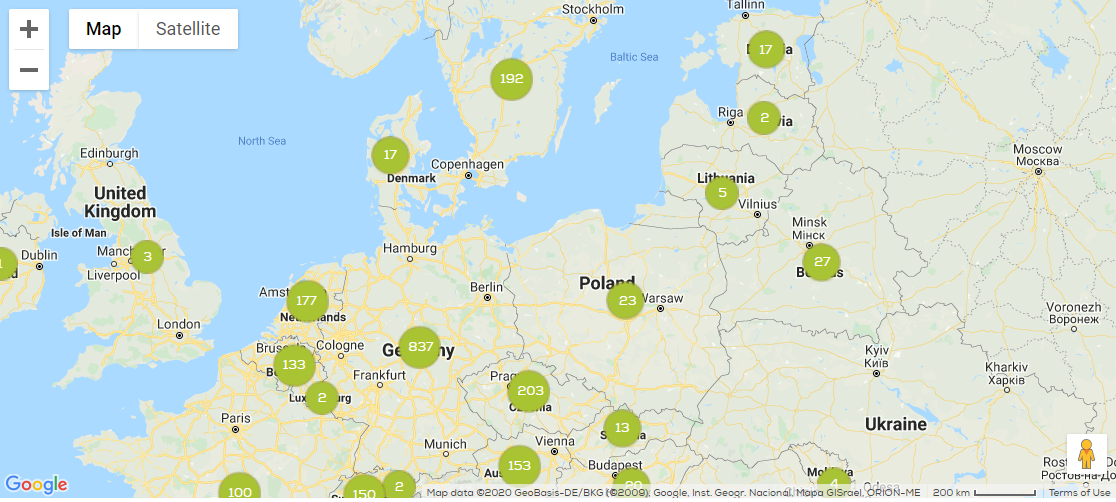Ride with CNG is ecological
Advantages of CNG
CNG (compressed natural gas) is used primarily in road transport by regular cars as well as buses and commercial vehicles. It has several advantages over liquid fuels.
Environmentally friendly – CO2 emissions from CNG are about 25% lower than for petrol. Only carbon dioxide and water vapour remain from the combustion of CNG while in the burning of petrol also poisonous carbon monoxide, nitrous oxide, hydrocarbons, carbon black and other fine particles are released in addition to CO2. Because natural gas is transported through pipeline there is less wear and tear on roads and railways and noise and vehicle exhaust are avoided.
A pioneer for future fuel – CNG is pioneering biomethane which is a renewable source of energy and an important future fuel. Biomethane is a purified biogas, equal in quality to natural gas and thus can be transported through the same pipelines. Biogas is produced during the fermentation process of garbage, animal waste and sewage sludge.

More CNG vehicles – The CNG car contains a bi-fuel engine powered by both gas and petrol. When the gas runs out the car automatically switches to petrol. CNG vehicles are produced in factories alongside traditional cars, ensuring their safety and effectiveness. Many large automotive companies now include CNG vehicles in their model line-up.
Refuelling is simple, clean and safe. EU Member States have established minimum requirements for CNG refuelling infrastructure. The goal is, by 2025, to cover the EU main road network with CNG filling stations at least every 150 km. In Latvia, CNG usage is poised to take off and Elenger aims to be part of that development.
CNG stations in Europe
Vehicles
The number of CNG vehicles has grown considerably in the world over the last decade – about 18 million in use.
- Passenger cars are usually bivalent – they use two fuels.
- The vehicle starts up and uses the default compressed gas (CNG), at the end of which the power system automatically and unobtrusively switches to petrol.
- After CNG refuelling, the car starts to run on compressed gas again.
Most well-known car manufacturers offer passenger cars, commercial vehicles, buses and trucks directly from the factory with compressed gas engines. Check out local car dealers for available selection.
Good to know
In Latvia there are eight CNG stations (owned by Virši-A). EU clearly supports and pushes member states for the deployment of alternative fuels infrastructure. Elenger also intends to be part of the CNG development in Latvia.
Passenger cars running on gas are usually bivalent – using two fuels. If the gas runs out, you can continue driving with petrol – until the next gas fuelling station.
There are no restrictions on the use of CNG cards. Compressed gas cars can be used the same way as petrol and diesel cars in garages, tunnels, on ferries, etc.
The car’s compressed gas tank capacity is usually 15-25 kg. Today’s middle-class bivalent passenger car consumes an average of 3.8-5 kg of natural gas for 100 km, so gas can be used to travel for about 400 km; there is also the additional petrol reserve.
Maintenance is comparable to petrol driven maintenance, as the additional gas supply system is practically maintenance-free.